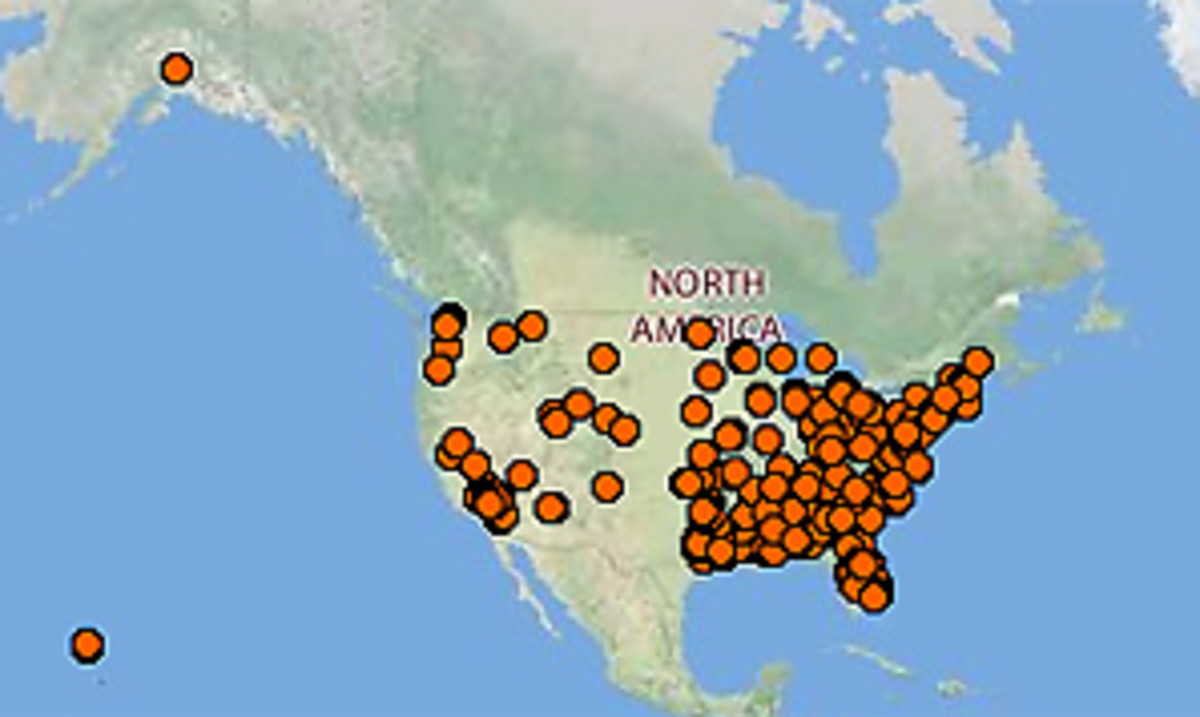
Latest all-star list affirms proximity to recruits translates to success
The fine folks at the U.S. Army All-American Bowl recently shipped over a list of the 422 nominees for the annual all-star game. During the next few months, game organizers will whittle the list into the two teams that will play at San Antonio's Alamo Dome on Jan. 9. But it's more than just an honor to be nominated. These players are providing a valuable research opportunity.
When the list arrived in spreadsheet form, I knew it was time to crunch some numbers. The list allowed me to further test the hypothesis put forth in January's recruit mapping project -- that a college football program's location plays as much or more of a role in that program's success or failure than the coach, facilities or tradition.
This list differs from the January list, which compiled all the BCS-conference signees from 2004-08, because that list included signees from schools that wouldn't have a chance of landing the players on this list. For 10 years, the Army game has targeted the best players in the nation. Though some of these 422 nominees will wind up playing in ESPN's competing game -- and though the Palmer (Alaska) High Moose managed an unusually high three nominees -- most of the big names in the Class of 2010 are on the list.
The five-year data were telling, but this helps provide an even clearer picture of the advantage certain schools enjoy when compiling talent. The five-year data examined every BCS-conference signee. These nominees are some of the nation's very best. We know their geographic distribution isn't a quirk, because it's similar to the picture painted by five years' worth of signees. (Check out the map of the nominees' hometowns here.)
If USC's Pete Carroll wanted to, he could sign an entire class of ultra blue-chippers from within 119 miles and still leave enough Southland studs for UCLA coach Rick Neuheisel to field 80 percent of his class. Miami's Randy Shannon, who should never waste a penny recruiting outside South Florida, has 30 nominees within 79 miles of his campus. Florida coach Urban Meyer, meanwhile, could compile almost three classes worth of cream-of-the-crop players from within 300 miles. Assuming the Gators can land most of the nearby players they target, at least an entire 25-man signing class made up of the nation's best players wouldn't be good enough to land a scholarship.
Meanwhile, Notre Dame recruits nationally, but the Fighting Irish might want to consider shopping for a little more local produce. Though only five nominees hail from Indiana, 25 live within 200 miles of South Bend and 47 live within 300 miles of those delicious C.J.'s Pub burgers the Domers love so much. Though higher academic standards than most and a cluster of nearby BCS-conference competitors make it tougher for the Fighting Irish to snag the 25 who live near South Bend than it is for, say, Texas to grab any of the 40 who live within 200 miles of Austin, Notre Dame has a talent base at its disposal.
Nebraska is another matter entirely. The program that fielded the baddest team in the universe just 14 years ago has to work exponentially harder than its peers to find players. We illustrated that pretty painfully in the January story, but coach Bo Pelini's task looks even more daunting when examining a list of solely elite recruits. The state of Nebraska produced only one nominee, and only six live within 200 miles of Lincoln.
So should Pelini lead the Cornhuskers to 10 wins this season, he and his staff would deserve more credit than if, say, Shannon's Hurricanes rejoined the double-digit win club. Some teams just have it easier than others.
By the way, if today's map of ultra-premium recruits intrigued you, prepare to be rendered completely worthless for the rest of the day. Richard Crout, the genius behind MapGameday.com, has created a search tool that allows you to parse three years worth of Football Bowl Subdivision recruiting in the blink of an eye. Want to know how many offensive linemen from Ohio signed with Big Ten teams in 2009? Crout's site will tell you and produce a map to illustrate the point. Just remember, it's not Crout's fault if you get fired for spending the entire day on his site.
Don't be so hard on Tennessee coach Lane Kiffin for his Twitter message Tuesday celebrating the commitment of LaGrange, Ga., defensive end J.C. Coleman. The tweet, which Tennessee athletic director Mike Hamilton blamed on an unidentified staffer, was the first from a coach who violated the NCAA rule forbidding coaches from publicly commenting on recruits. The real surprise is that it took this long for a coach's Twitter feed to run afoul of this particular rule.
Remember, these coaches are hypercompetitive people who devote a huge chunk of their professional lives to recruiting high school stars. When they get a commitment, they probably want to shout it from the rooftops, but the NCAA forbids that. It was only a matter of time before someone's excitement got the better of his thumbs.
Coaches should take a lesson from Kentucky basketball coach John Calipari, who found a way to Tweet a major recruiting victory without breaking NCAA rules. Shortly after receiving a commitment from point guard John Wall this week, Calipari sent this tweet: "This is unbelievable. Tomorrow we will !#$@+&%# that %&$* %&:; has $@~'%# to *2$( at %&%#&%$. Can u believe this!"





